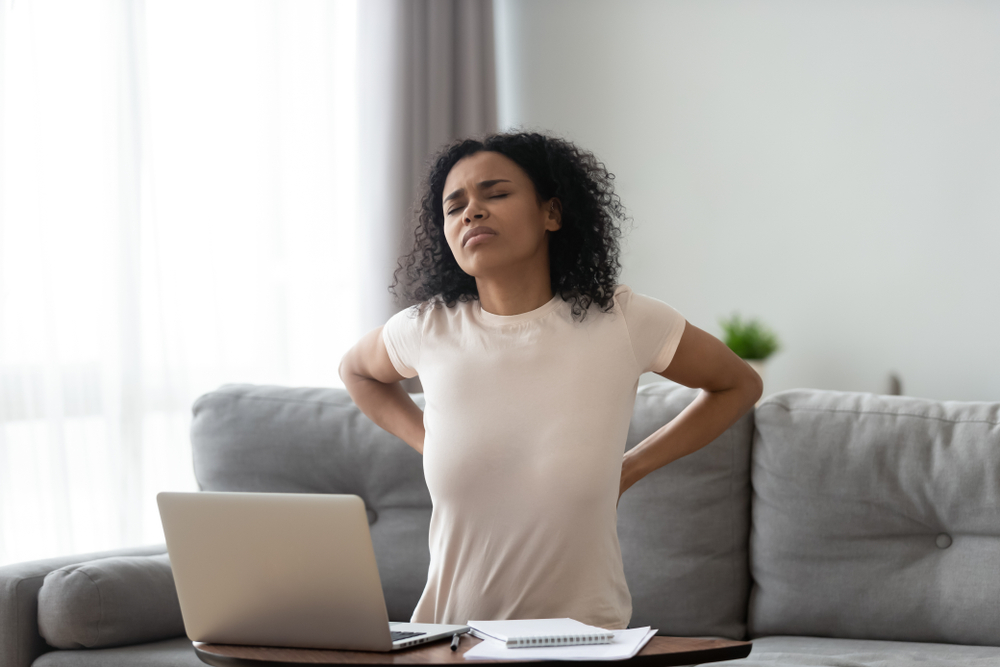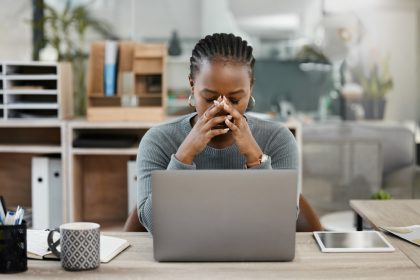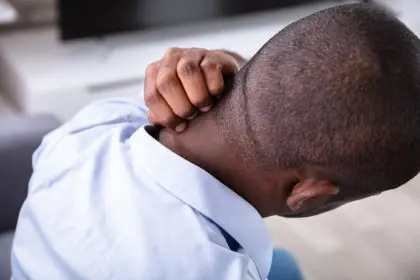That nagging back pain you’ve been ignoring. The slight hunch you notice in photos. The way your shoulders never quite seem level. Your spine might be trying to tell you something important about its alignment, and understanding exactly what’s happening could make all the difference in finding relief.
Spine curvature disorders affect millions of Americans, yet confusion abounds about the two most common types. Scoliosis and kyphosis might sound like interchangeable medical jargon, but they’re as different as a twisted road and a speed bump. Let’s straighten out the facts about these distinct conditions.
The directional difference that changes everything
At their core, scoliosis and kyphosis are both about abnormal spine curvature. But the devil’s in the details, specifically the direction of that curve.
Scoliosis takes the sideways path
Imagine looking at someone from behind. In a healthy spine, the vertebrae stack neatly in a straight line from the neck down to the tailbone. With scoliosis, that line takes a detour, curving sideways and often twisting along the way. This creates the classic signs of uneven shoulders, one hip higher than the other, or a ribcage that looks asymmetrical.
Scoliosis essentially makes your spine look like an “S” or “C” shape when viewed from behind. It’s a three-dimensional problem that involves rotation of the vertebrae too, which is why it can cause that characteristic rib hump when bending forward.
Kyphosis rounds forward
Now picture someone from the side. A healthy spine has natural curves forward at the neck and lower back, and a slight outward curve in the mid-back. Kyphosis exaggerates that outward curve in the thoracic spine, creating that rounded upper back appearance sometimes unkindly called “hunchback.”
Unlike the sideways curve of scoliosis, kyphosis is all about excessive forward bending. Think of it as someone perpetually slumping or hunching forward, even when they’re trying to stand straight.
This directional difference isn’t just academic. It influences everything from how each condition is diagnosed to how it’s treated and what complications might arise.
The origin stories reveal important clues
How and why these curvatures develop tells us much about who’s at risk and what can be done about them.
Scoliosis mysteries and certainties
The most common form of scoliosis, idiopathic scoliosis, remains somewhat mysterious. The word “idiopathic” literally means doctors don’t know exactly what causes it. About 80% of scoliosis cases fall into this category.
What we do know:
- It often appears during growth spurts, typically between ages 10 and 15
- Girls are much more likely than boys to develop curves that worsen
- There’s definitely a genetic component, with the condition running in families
- Certain conditions like cerebral palsy, muscular dystrophy, or birth defects of the spine can cause other forms of scoliosis
Kyphosis and its many triggers
Kyphosis has clearer culprits in many cases. The most common causes include:
- Poor posture over time, especially in our device-dominated world where we’re constantly looking down at phones and laptops. This postural kyphosis can often be improved with awareness and exercises.
- Age-related degeneration, where vertebrae become wedge-shaped due to osteoporosis or fractures. This is particularly common in older women.
- Developmental issues where the spine doesn’t form properly before birth.
- Scheuermann’s kyphosis, which appears during adolescence when vertebrae develop in a wedge shape instead of rectangles.
Knowing these different origins helps explain why treatment approaches vary so dramatically between these conditions.
How your body warns you something’s wrong
Both conditions can fly under the radar for years, especially in mild cases. But your body has ways of signaling that your spine needs attention.
Scoliosis signals
The visual clues often come first with scoliosis. You might notice:
- Uneven shoulders or one shoulder blade that sticks out more.
- Clothes that hang unevenly.
- One hip higher than the other.
- The body leaning slightly to one side.
Pain isn’t actually that common in adolescent scoliosis, which is why screenings are so important. By the time pain develops, the curve has often progressed significantly. However, adults with scoliosis frequently experience back pain, especially with activity.
Kyphosis complaints
The rounded upper back is the most obvious sign of kyphosis, but it often brings other symptoms.
Back pain that worsens with activity and improves with rest Fatigue in the back muscles from trying to maintain proper posture Stiffness in the spine In severe cases, breathing difficulties when organs get compressed
The pain patterns tend to differ too. Kyphosis pain often centers in the most curved area of the spine, while scoliosis pain might spread more unpredictably depending on which muscles are compensating for the curve.
Diagnosis approaches that reveal the differences
Medical professionals use distinct tools and measurements to identify and track these conditions.
Measuring the sideways shift
For scoliosis, the primary diagnostic tool is the Cobb angle, measured on an X-ray taken from the back. A curve greater than 10 degrees officially qualifies as scoliosis, though treatment typically doesn’t begin until curves reach about 25 degrees.
The forward bend test is also crucial for scoliosis screening. When someone with scoliosis bends forward, the rotation of their spine becomes more visible, often creating a raised area on one side of the ribs or lower back.
Quantifying the forward hunch
Kyphosis is also measured using the Cobb angle, but on a side-view X-ray instead. Normal kyphosis in the thoracic spine measures between 20 and 45 degrees. Anything beyond 45 degrees is considered hyperkyphosis.
Physical examination focuses on the side profile and the ability to straighten up when prompted. Some people with postural kyphosis can temporarily correct their posture, while those with structural kyphosis cannot.
Treatment paths diverge based on the curve
The approach to correcting or managing these conditions differs dramatically based on the nature of the curve.
Scoliosis interventions
For mild scoliosis, monitoring is often the first approach. Regular X-rays track whether the curve is progressing, especially during growth spurts.
As curves become moderate, bracing may be recommended, particularly for growing adolescents. The brace doesn’t correct the existing curve but aims to prevent it from worsening.
Physical therapy focusing on scoliosis-specific exercises can help manage symptoms and potentially slow progression, though it rarely corrects curves on its own.
For severe curves or those that continue to progress despite bracing, surgery may be recommended. This typically involves spinal fusion with rods and screws to straighten and stabilize the spine.
Kyphosis corrections
Postural kyphosis often responds well to physical therapy aimed at strengthening back muscles and improving awareness of proper alignment. Postural reminders and ergonomic adjustments can make a significant difference.
Scheuermann’s kyphosis might require bracing if caught during the growth phase, along with targeted physical therapy.
For painful or progressive kyphosis, especially in adults with osteoporosis-related kyphosis, treatments might include pain management, vertebroplasty or kyphoplasty to stabilize fractures, or rarely, surgery.
The emphasis for kyphosis treatment often centers on halting the progressive collapse of vertebrae forward, while scoliosis treatment focuses on preventing sideways progression.
Living well with spinal curvature
Whether you’re dealing with a sideways curve or a forward hunch, quality of life remains the ultimate goal of any treatment plan.
The core strength connection
For both conditions, core strength serves as a critical foundation. Think of your core muscles as the natural brace supporting your spine. The stronger your core, the less strain on your back and the better your overall posture.
The mindfulness of movement
Becoming aware of how you sit, stand, and move throughout the day makes a tremendous difference in managing symptoms. Simple adjustments like setting posture reminders on your phone, ensuring proper workstation ergonomics, and taking movement breaks can prevent pain flares.
When to worry and when to relax
Not all curvatures progress or cause serious problems. Understanding the warning signs that require medical attention helps prevent unnecessary anxiety.
For scoliosis, rapid changes in appearance, increasing pain, or curves that continue to worsen despite treatment deserve prompt medical attention.
For kyphosis, increased pain, difficulty standing upright, or signs of neurological issues like numbness or tingling require evaluation.
With proper management, most people with spinal curvatures lead active, fulfilling lives without limitations. The key lies in early identification, appropriate intervention, and consistent attention to spine health throughout life.
Understanding these fundamental differences between scoliosis and kyphosis empowers you to advocate for proper assessment and treatment. Your unique spine deserves specific care tailored to its particular curve pattern, not a one-size-fits-all approach to “bad posture” or “back problems.”
















